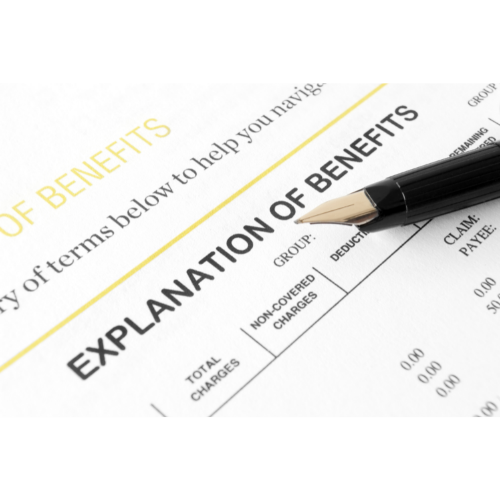Understanding Your EOB

If you get a medical bill, you will also get an explanation of benefits. An EOB is a statement from your health insurance carrier detailing what costs it will cover for medical care or products. It is important to remember that this is not a bill (yes, it will actually say this on the statement), even though there may be a line reading “amount you owe.” Usually, an EOB arrives before the actual bill. Think of it as a warning from your insurance provider that a bill may soon come due.
Here’s how it works: Once you go to a doctor’s appointment, the doctor’s office sends a claim/bill to your insurance company. Your health insurance plan determines what part of the claim is covered based on your health plan and sends you an EOB. The insurer pays the doctor’s office for their portion of the claim. Lastly, the doctor’s office sends you a bill for the amount you owe, if any.
So why should you care what an EOB is if it’s not a bill? Well, knowing how to read an explanation of benefits can be helpful in understanding your health care plan. It helps you see how medical expenses are distributed among your doctor, your health plan and your co-payment.
What’s included
- Patient details.
- Claim number.
- The cost of the care you received.
- Money you saved by visiting an in-network provider. (You did stay in-network, didn’t you?)
- Any out-of-pocket expenses for which you are responsible.
An EOB may also explain what part of your out-of-pocket medical expenses count toward your annual deductible and how close you are to meeting the annual deductible.
How to read an EOB
Service description: Description of the health care services you received, such as a medical visit, screenings, surgery or lab test.
Provider charges: The amount your provider (doctor) bills for your visit.
Allowed charges: Amount that your provider will be reimbursed, negotiated between the insurance carrier and the provider (this may not be the same as the provider charges).
Paid by insurer: Amount your insurance plan will pay to your provider.
Payee: The person who will receive any reimbursement for over-paying the claim.
What you owe: (This is figuratively, if not literally, the bottom line). Amount the patient or insurance plan member owes after your insurer has paid.
Remark code: A note from the insurance plan that explains more about the costs, charges and paid amounts for your visit.
What you should do
- Check for accuracy. Make sure the services you received and the date are correct.
- Look for how much the insurance plan covered. What’s left is what you owe.
- Keep your EOB until you receive the actual bill from the medical provider to make sure they match. If you happen to get a bill before the explanation of benefits, don’t pay the bill until you do. If you discover an error on the bill, find what to do here.
If you have any questions about your EOB, contact your health insurance company, whose phone number should be on the statement.
Related: How To Read a Summary of Benefits and Coverage. .


Share Your Thoughts